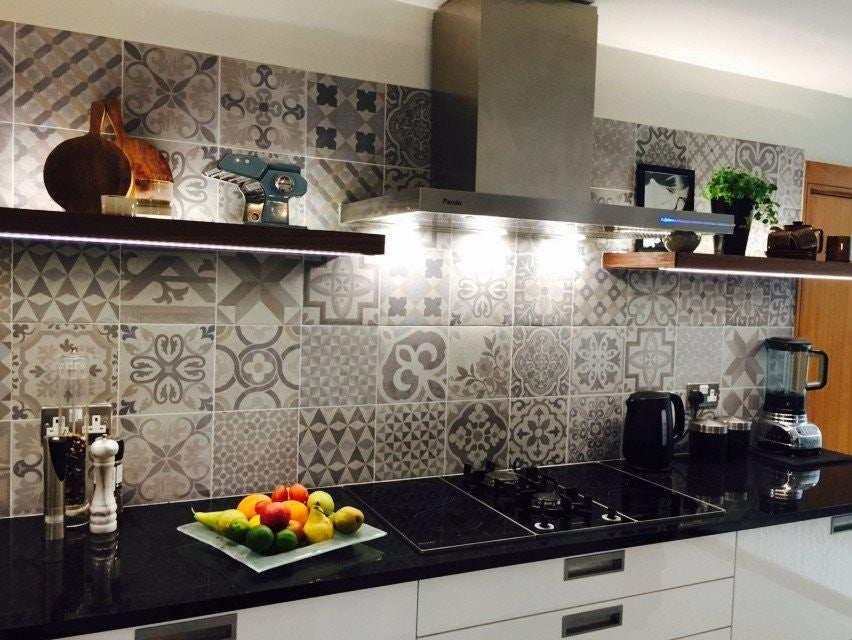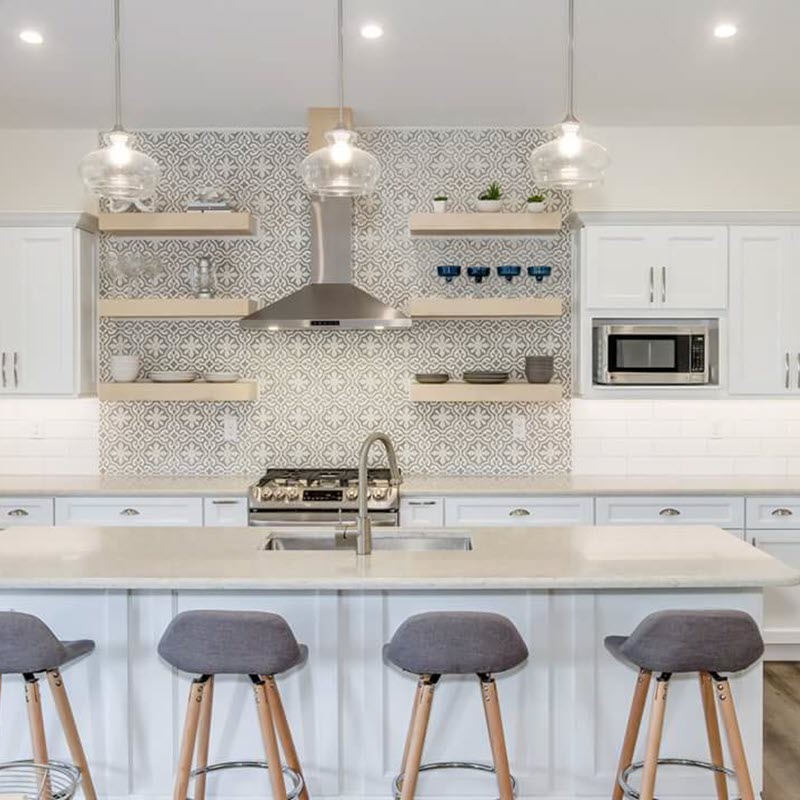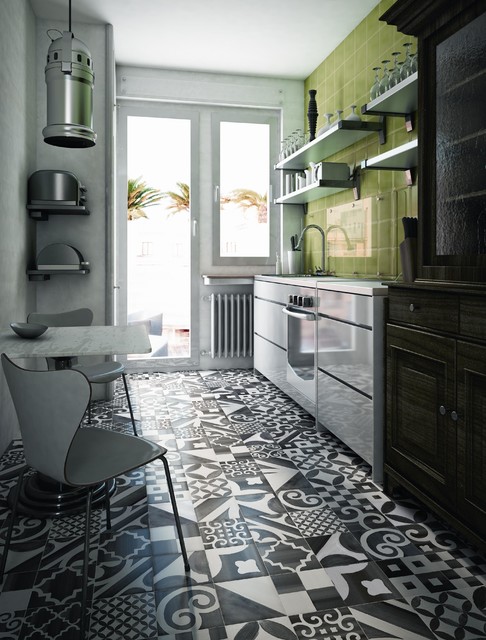Introduction
Decorative kitchen tiles can dramatically transform the aesthetic appeal of your kitchen. Having recently remodeled my kitchen, I can personally attest to the significant impact these tiles can have—not only do they serve practical purposes, but they also add character and style to the heart of the home.
This comprehensive guide will delve into the various types of decorative tiles, their benefits, how to choose the right tiles for your space, installation tips, and maintenance advice. Let’s embark on this journey to make your kitchen a true work of art!
Types of Decorative Kitchen Tiles
There’s a multitude of decorative kitchen tiles available on the market today. Let’s explore the most popular types:
Ceramic Tiles
Ceramic tiles are a timeless choice. They are durable, easy to maintain, and come in a vast array of colors and patterns, allowing for endless design possibilities.
Porcelain Tiles
Porcelain tiles are a subtype of ceramic tiles, known for their density and resistance to moisture. They often mimic natural stone, providing both elegance and functionality.
Glass Tiles
Glass tiles are perfect for adding a touch of luxury to your kitchen. They reflect light beautifully and can be used as a backsplash to create a stunning visual effect.

Natural Stone Tiles
If you’re looking for a unique and organic touch, natural stone tiles like granite, marble, or slate can add unparalleled beauty to your kitchen. However, they require more maintenance than other types.
Subway Tiles
Subway tiles are a classic choice and are especially popular for backsplashes. They usually come in white or neutral tones but can be found in various colors and finishes.

Decorative Mosaic Tiles
Mosaic tiles allow for unlimited creativity. They can be used to create intricate designs, patterns, or images and are perfect for adding a personal touch to your kitchen.
Benefits of Using Decorative Kitchen Tiles
Decorative kitchen tiles come with various advantages that make them ideal for this high-traffic area:
- Durability: Most tiles are resistant to wear, moisture, and stains.
- Easy Maintenance: Tiles can be easily cleaned with soap and water.
- Aesthetic Appeal: Decorative tiles can enhance the overall look and feel of your kitchen.
- Versatility: Available in various materials, colors, and patterns to fit any design theme.
- Value Addition: A well-tiled kitchen can increase the overall value of your home.

How to Choose the Right Decorative Kitchen Tiles
Choosing the right decorative kitchen tiles can be daunting with so many options available. Here are some key factors to consider:
1. Style and Theme
Consider the overall style of your kitchen. Are you aiming for a modern, rustic, or traditional look?

2. Color Scheme
Select colors that complement your existing decor. Light colors can make a small kitchen feel larger, while dark colors can create a cozy ambiance.
3. Tile Size
Tile size can affect the overall feel of your space. Larger tiles work well in spacious kitchens, while smaller tiles can add detail to compact areas.

4. Budget
Set a budget before shopping. Remember to account for the cost of installation, which can vary depending on the complexity of the design.
5. Maintenance
Consider how much time and effort you’re willing to spend on maintenance. For instance, natural stone tiles may require sealing and special cleaners.

Installation of Decorative Kitchen Tiles
The installation of decorative kitchen tiles can be a DIY project or a job best left to the professionals. Here’s a step-by-step guide if you decide to tackle it yourself:
Step 1: Gather Your Materials
You will need tiles, tile adhesive, grout, spacers, a tile cutter, a notched trowel, a level, and a sponge.
Step 2: Prepare the Surface
Ensure the surface is clean, dry, and smooth. Repair any imperfections before proceeding.
Step 3: Plan Your Layout
Lay out the tiles without adhesive to find the best configuration. This will help you visualize the final product.
Step 4: Apply Adhesive
Using a notched trowel, apply adhesive to a small section of the surface, then press the tiles into place, using spacers to maintain even gaps.
Step 5: Grouting
Once the adhesive has dried, remove the spacers and apply grout using a rubber float. Make sure to fill all the gaps evenly.
Step 6: Clean and Seal
Wipe away excess grout with a damp sponge. After the grout has cured, consider sealing it to protect from moisture and stains.
Maintenance Tips for Decorative Kitchen Tiles
Taking care of your decorative kitchen tiles is crucial to ensure their longevity and maintain their beauty. Here are some tips based on my experience:
1. Regular Cleaning
Clean your tiles with warm soapy water or a mild cleaner. Avoid harsh chemicals that can damage the finish.
2. Avoid Scratches
Use soft cloths, sponges, or non-abrasive cleaning tools to prevent scratching the tile surface.
3. Seal Natural Stone Tiles
If you choose natural stone, remember to apply a sealant periodically to protect against stains and moisture.
4. Address Grout Issues Promptly
Keep an eye on your grout lines. If you notice discoloration or cracking, re-grouting may be necessary.
Pros and Cons of Decorative Kitchen Tiles
| Pros | Cons |
|---|---|
| Durable and long-lasting | Can be expensive |
| Wide variety of designs | Prone to chipping and cracking |
| Resistant to moisture and stains | Complex installation process |
| Easy to clean | Some types require more maintenance |
Inspiration: Decorative Tile Kitchen Designs
Feeling inspired? Here are some trendy decorative tile designs that I’ve found particularly engaging:
1. Classic White Subway Tiles
A timeless choice that can fit any kitchen style, providing a clean and fresh look.
2. Colorful Mosaic Patterns
Mosaics can create unique backsplash designs, adding a playful touch to your kitchen.
3. Natural Stone Accents
Using natural stone tiles as accents can create an elegant and upscale feel.
4. Geometric Patterns
Geometric tiles are trending and can add a modern flair to traditional kitchens.
FAQs about Decorative Kitchen Tiles
1. What are the best types of tiles for kitchen backsplashes?
Ceramic, glass, and subway tiles are among the best choices for kitchen backsplashes due to their durability and ease of maintenance.
2. How do I remove stains from kitchen tiles?
For most stains, a mixture of vinegar and water or a baking soda paste can be effective. Always test in an inconspicuous area first.
3. Can I install tiles over existing tiles?
Yes, as long as the existing tiles are in good condition and well-adhered. Ensure proper preparation and leveling.
4. How often should I seal my natural stone tiles?
This depends on usage, but sealing every 6 to 12 months is generally recommended for natural stone tiles.
5. Are there eco-friendly tile options available?
Yes, many manufacturers offer recycled tiles and sustainable materials. Look for certifications to ensure eco-friendliness.